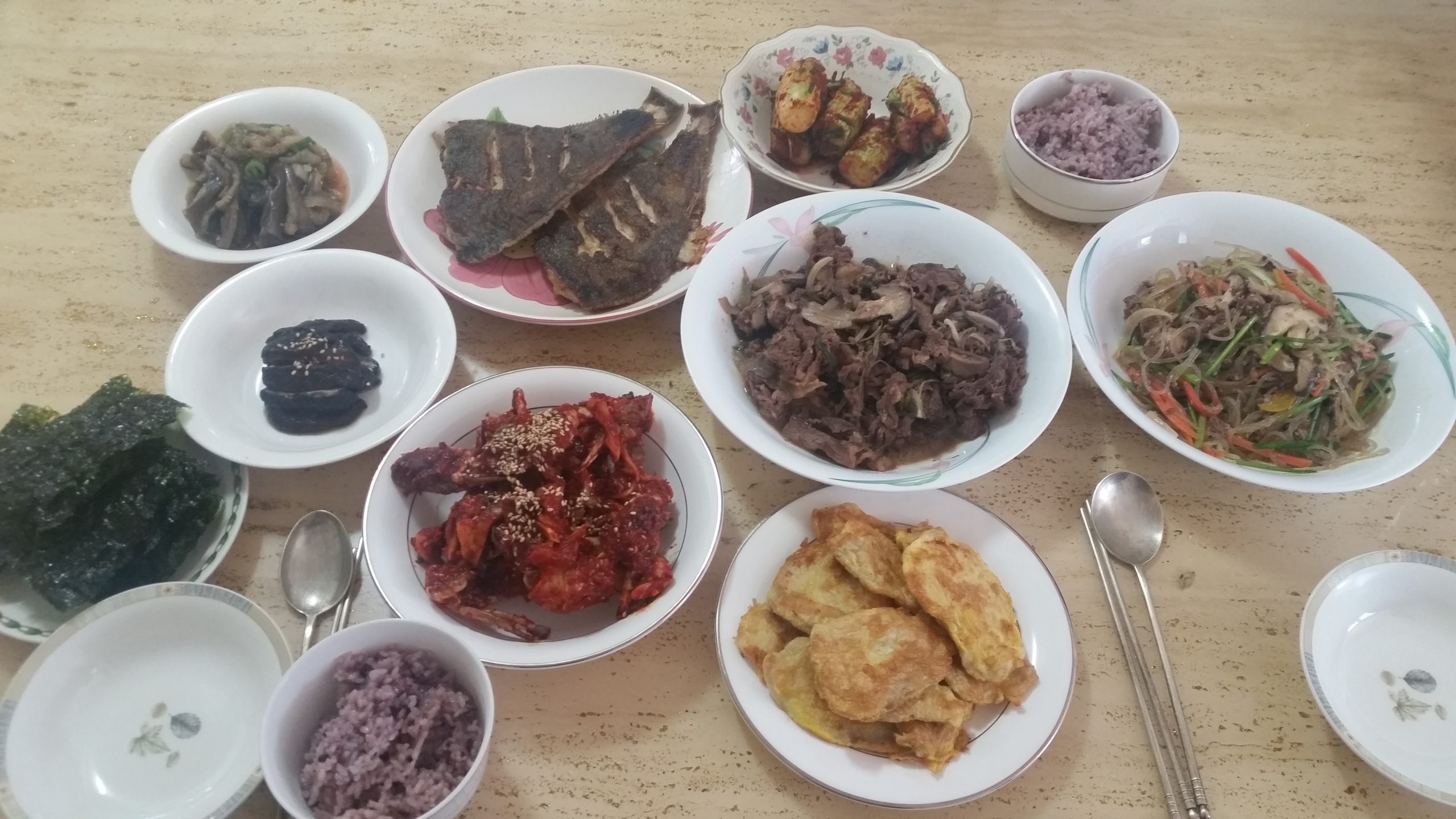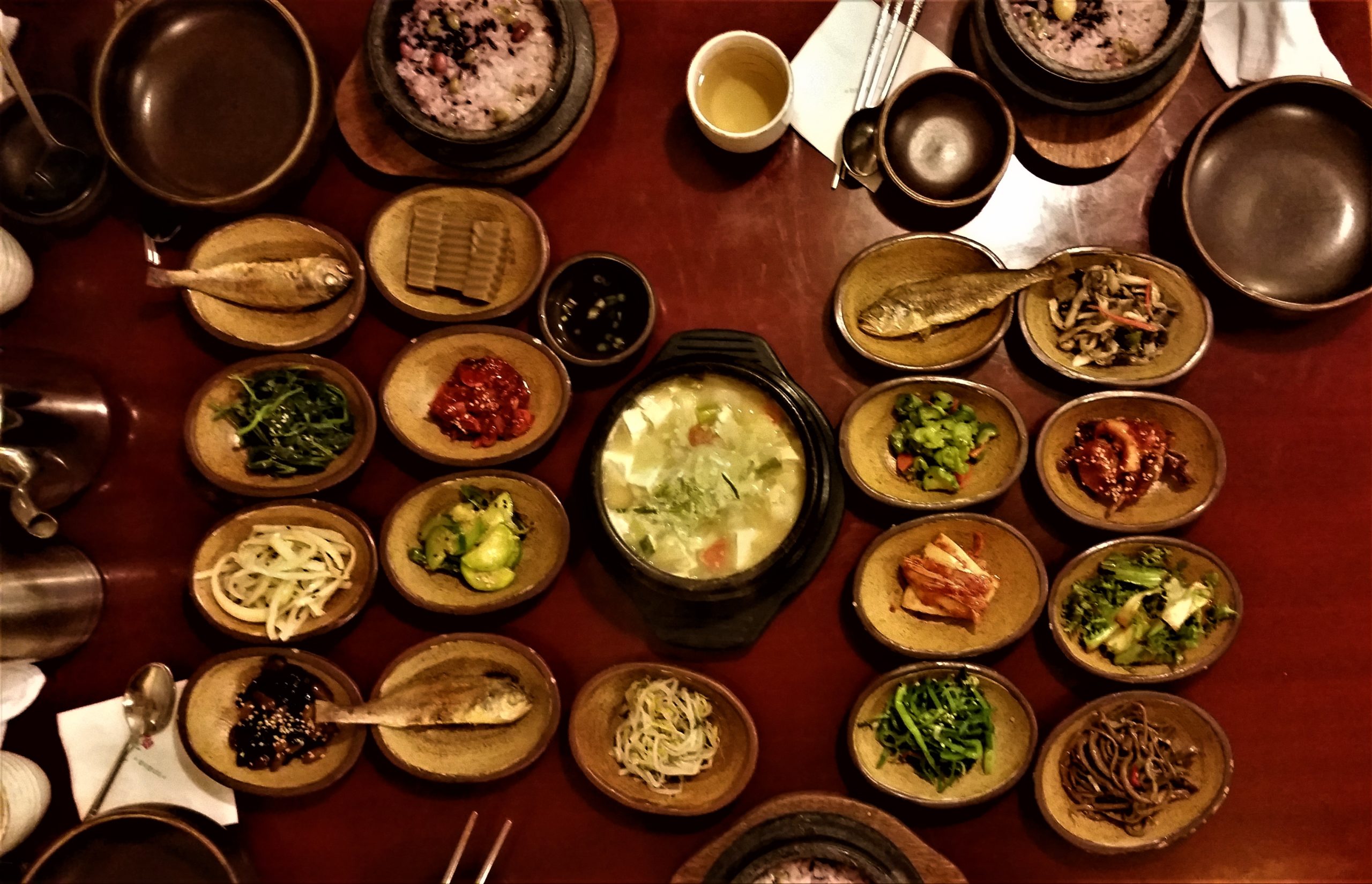The Analysis of Korean Cuisine (Part 1) Posted by Flying Oyster on May 16, 2021 in Culture, Food, Idioms, Korean Language, Vocabulary
If you enjoy Korean food, how much do you know about Korean food? If you can think about Kimchi, Bibimbop and Bulgogi as Korean food, that is a good start. However, Korean food is more than these dishes. I have been noticing distinctive characteristics about my home county food as a native Korean who deeply appreciates Korean food. Today, I will share my depth of understanding of Korean cuisine.
- 밥심 (bop-sim: the power of eating rice)
한국인은 밥심으로 산다. (Han-gook-in-eun-bop-sim-eui-roh-sahn-dah: Koreans get energy from eating rice.) This is a copyrighted phrase I remember from an old TV commercial. I think most Koreans would agree with this phrase.
Since most 한국식단 (han-gook-sik-dahn: a Korean diet, menu) is comprised of rice and a main dish along with side dishes, it is not uncommon to have rice at every meal for Koreans. Although many young Koreans, nowadays, prefer a simpler way to eat meals, such as western food options. Or they try to cut back a daily portion of 탄수화물 (tahn-soo-hwa-mool: carbohydrate), especially, consuming white rice. Since white rice can cause many health issues, eating 잡곡밥 (job-gok-bop: multi-grain rice) is prevalently favored in Korea. Whether it is white rice or multi-grain rice, we believe that rice is our main source of energy for the day.
There is a funny anecdote that many Koreans would experience themselves or hear from someone who travels abroad: a Korean, who could travel and have access to gourmet food from all over the world, would eventually look for 흰쌀밥 (hin-ssal-bop: white rice) and 집밥찬 (jip-bahn-chan: homemade side dishes). It may not be true to some, but there’s more than a little truth to it.
Since I left Korea a long time ago, not being able to have a Korean meal daily didn’t bother me much. However, I see that I periodically crave Korean food, especially 집밥 (jib-bop: homemade Korean meal, usually served with rice and side dishes) as I am getting older. I now understand why older people used to say 밥을 먹어야 속이 든든하다. (bop-eul-muk-uh-yah-sok-ee-dun-dun-hah-dah: you would have a satisfying belly-full once you have a meal with rice.)
2. The Joy of Daily Choice
Koreans enjoy a variety of food as side dishes. In traditional 한식 (han-sik: Korean diet, Korean food), there are several types of 밥상 (bop-sang: a dining table), It is categorized by numbers of 반찬 (bahn-chan: side dishes). Traditionally, 한식 is categorized by the number of 반찬.
밥 (bop: rice), 국 (gook: soup) , 김치 (Kimchi), 장 (Jang: traditional Korean condiments such as red chili paste or soy sauce. there are more than 200 kinds of 장 in Korean cuisine.) are the basic items on every 밥상. When there are three kinds of 반찬 on the table, it is called 3첩반상 (sahm-chup-bahn-sang). The number of 반찬 can go up to 12 and it is called 12첩반상 (sib-ee-chup-bahn-sang), which used to be served to kings. All 반찬 are supposed to be different food ingredients with different 조리법 (joh-ri-bup: cooking style). It shall be hard to prepare 한식, but someone’s stomach will be happy for sure. When you have many choices to enjoy a variety of 반찬, 인생은 즐거워 (in-sang-eun-jul-guh-wo: life is good).
3. Sweet, Salty and Spicy
Do you perhaps think spiciness is the only character in Korean cuisine? Korean food can be spicy, but you can enjoy all kinds of flavors in Korean cuisine.
The main spices in Korean cuisine are 간장 (gahn-jang: soy sauce), which produces salty flavor, 고추장 (goh-chu-jang: fermented red chili paste) which produces 걸죽한 매운맛 (gul-jook-hahn-mae-woon-maht: heavy volume of spiciness), 된장 (deon-jang: fermented soybean paste) which produces 감칠맛 (gahm-chil-maht: savory flavor), 고추가루 (goh-choo-gah-roo: red pepper powder) which produces 칼칼한 매운맛 (kahl-kahl-han-mae-woon-maht: refreshing spiciness). When these spices mix, they create all kinds of flavors.
Unfortunately, 위암 (we-ahm: stomach cancer) is the most prevalent cancer in Korea. A lot of doctors point out that consuming spicy and salty Korean food frequently could be the main culprits of stomach cancer. Anything beyond moderation always harms us. Eating less salty and spicy food has been a health principle among many Koreans.
What do you think about my thoughts about Korean cuisine? Was there anything that surprised you? Do you think the same or do you disagree? I have more things to talk about Korean cuisine in the next post. Stay tuned!

Build vocabulary, practice pronunciation, and more with Transparent Language Online. Available anytime, anywhere, on any device.






